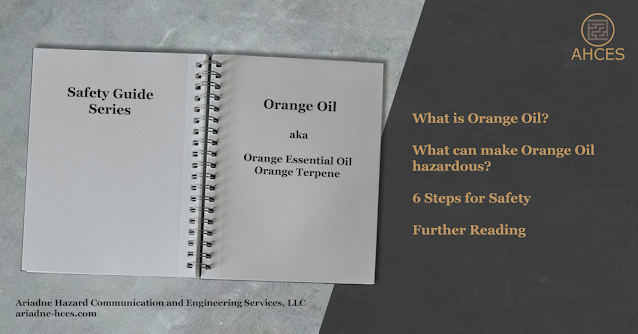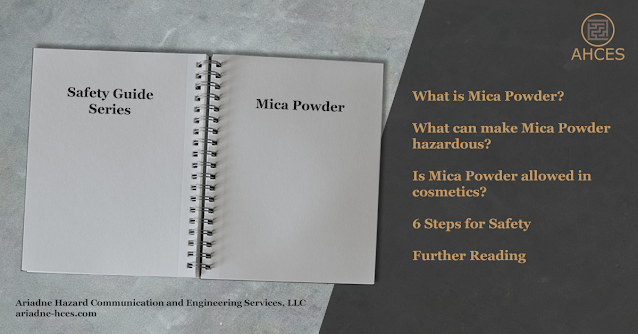Quaternium-15 Safety Guide
What is Quaternium-15?
Quaternium-15, also known as 1-(3-chloroallyl)-3,5,7-triaza-1-azoniaadamantane chloride and methenamine 3-chloroallylochloride, is a quaternary ammonium salt. Quaternium-15 is used as a surfactant and preservative in many products, including personal care and cosmetics.
Quaternium-15 has the CAS Number 4080-31-3.
Notable Properties of Quaternium-15
Quaternium-15 is a cream-colored powder when in a concentrated, solid form.
Quaternium-15 is soluble in water. When dissolved in water, quaternium-15 releases formaldehyde, which is the active chemical for antimicrobial properties.
See the Formaldehyde Safety Guide for more details on formaldehyde specific safety information.
What Makes Quaternium-15 Hazardous?
Quaternium-15 can be irritating to the skin. There are also indications that quaternium-15 can be a sensitizer, meaning repeated exposure can cause an allergic reaction known as contact dermatitis to develop in some individuals. There is a patch test available for testing quaternium-15 sensitivity.
The Scientific Committee on Consumer Safety (SCCS), which is managed by the European Commission, also cites that quaternium-15 as toxic to reproduction, category 2 (GHS). This means it is suspected of being a human reproductive toxicant.
Quaternium-15 Frequently Asked Questions
Is Quaternium-15 safe for skin?
Both the Scientific Committee on Consumer Safety (SCCS) and the Cosmetic Ingredient Review (CIR), cite Quaternium-15 as safe for use in cosmetics in concentrations up to 0.2%.
If allergic reaction does occur, products with quaternium-15 should not be used. Sensitivity to other quaternary ammonium salt containing compounds is also possible.
6 Steps for Safety
Step 1: Read the Warnings
When working with a product for the first time, always read all the safety documents first. This includes safety data sheets, which should be provided by the manufacturer or importer of the quaternium-15 containing product. There may also be an OSHA chemical label, FDA cosmetics label, or a Consumer Protection label on the packaging of the quaternium-15 containing product. These documents all contain important information on the hazards of the product and instructions on how to mitigate those hazards.
Different compositions in different products may cause additional hazards to be present beyond the properties of pure quaternium-15. Be sure to familiarize yourself with the differences between separate quaternium-15 products.
For example, a lotion which uses quaternium-15 as a preservative and uses geraniol as a fragrance may have additional irritation concerns as geraniol can also be a skin sensitizer.
Step 2: Prepare Your Workspace
Creating a safe workspace, sometimes referred to as engineering control, is a key component of working safely with any potentially hazardous substance.
Since the primary hazard of quaternium-15 is contact with the fine dust, ventilation is important. Fans which would blow quaternium-15 around should be avoided. Dust collectors and air filters which draw in and capture any stray quaternium-15 are ideal.
Step 3: Gather Your PPE
For working with solid quaternium-15, the following PPE may be useful depending on the quantity of material being handled.
- Gloves
- Basic disposable gloves will prevent quaternium-15from touching the skin on the hands and causing irritation.
- Long Sleeves
- Long sleeves will prevent quaternium-15 from touching the skin on the arms and causing irritation. Either a long-sleeved shirt, long-sleeved coat, or disposable sleeves will work.
- Launder any contaminated closing separately to prevent cross-contamination and inform anyone laundering the clothing of the presence of quaternium-15 so they can take any necessary precautions.
- Respiratory Protection
- A dust mask or half-face respirator rated for the particle size of the quaternium-15 powder you are working with will protect against respiratory irritation.
Step 4: Clear Your Workspace
Having a clear workspace is an important part of safety. Clutter can cause accidents and can prevent you from noticing if something has spilled.
This is also a good time to double-check any engineering controls, like a dust collector, are in proper working order and no filters need to be changed out.
If you are working in a shared space, make sure anyone around you can also remain safe when you are working with quaternium-15.
Step 5: Do The Work
When proper precautions are taken, working with quaternium-15 can be done safely.
If work cannot be completed in one sitting, be sure to properly seal any quaternium-15 containers to prevent spills or accidental release when not in use.
Step 6: Clean Up
Dust generation should be avoided during cleanup. For small spills, a damp absorbent cloth can be used to pick up any quaternium-15 without causes dust to become airborne.
Be sure to dispose of any waste in accordance with local regulations.
Further Reading
The National Library of Medicine has a PubChem article on Quaternium-15.
Check out the Safety Guide Series Hub for more safety guides.
Sources Cited
Becker, L. C. (2017). Quaternium-15. International Journal of Toxicology, 36(5_suppl2). https://doi.org/10.1177/1091581817717643
Cahill, J., & Nixon, R. (2005). Allergic contact dermatitis to quaternium 15 in a moisturizing lotion. The Australasian journal of dermatology, 46(4), 284–285. https://doi.org/10.1111/j.1440-0960.2005.00210.x
National Center for Biotechnology Information (2025). PubChem Annotation Record for , N-(3-CHLOROALLYL)HEXAMINIUM CHLORIDE, Source: Hazardous Substances Data Bank (HSDB). Retrieved July 25, 2025 from https://pubchem.ncbi.nlm.nih.gov/source/hsdb/6820.
National Center for Biotechnology Information (2025). PubChem Compound Summary for CID 20011, 1-(cis-3-Chloroallyl)-3,5,7-triaza-1-azonia-adamantane chloride. Retrieved July 25, 2025 from https://pubchem.ncbi.nlm.nih.gov/compound/Quaternium-15.
National Oceanic and Atmospheric Administration (n.d.).
1-(3-CHLOROALLYL)-3,5,7-TRIAZA-1-AZONIAADAMANTANE CHLORIDE. CAMEO Chemicals. Retrieved July 25, 2025, from https://cameochemicals.noaa.gov/chemical/18075
SCCS (Scientific Committee on Consumer Safety), Opinion
on quaternium-15, 13-14 December 2011





Comments
Post a Comment